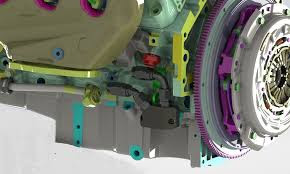Process alternatives
to optimize their final properties
In the field of
Induction Hardening in Faridabad,
it is usually considered that cryogenic temperatures are those below 120 K
(-153°C). Consequently, conventional subzero treatments, often referred to as
shallow cryogenic treatments and usually performed at temperatures around
-80°C, cannot be regarded as real cryogenic processes.
Cryogenic temperatures couldn’t
be achieved until the late 19th century and, therefore, the emergence of
cryogenic treatments in industry is relatively recent. The development of this
technology has been based mainly on empirical results. The basic research of
the transformations produced in the materials when exposed to cryogenic
temperatures is usually conducted with significant delay with regard to
development of practical applications.
In general, cryogenic treatments
have been considered as separate operations, added to the conventional heat
treatments. This is something that has conditioned the development of knowledge
in this field, and also the reliability of the results obtained with these
processes. Maybe this happens because, very often, this technology is used in
tools and finished components, without paying much attention to the previous
operations. This approach doesn’t enable a good control over the process
results since these depend on the material history before the cryogenic
treatment. And, obviously, the previous heat treatments play a crucial role.
In this regard, the consideration
of cryogenic treatments as independent operations is a mistake. The right way
to contemplate them is not as a supplementary step, but as an integral part of
the overall heat treatment process. Only in this way its full potential will be
exploited, selecting the route that is most adequate in each
Case Hardening in Faridabad depending
on the material considered and the application in which it will be used.
We will try to illustrate it with
an example. Let’s consider a case hardening steel like 18NiCrMo5, which is
commonly used in applications where high yield strength and good wear
resistance are required (shafts, gears, cams, etc.). The heat treatment process
of this steel starts with a cementation step in order to increase the carbon
content in the surface of the component. The subsequent quenching, followed by
a tempering cycle at not more than 200°C, provides a very hard surface while
the core remains soft and tough.
When considering the cryogenic
treatment of a component made of case hardened steel, two basic strategies
could arise. One is to apply it to the already heat treated part, that is,
after tempering. The other one is to perform the cryogenic process after
quenching but before tempering.
Several investigations focused on
studying the effects of cryogenic treatments in this steel grade have been
carried out in recent years, but the results seem confusing and sometimes even
contradictory. Actually, this happens because in most of these studies only one
of the two approaches has been considered, not taking into account that the
results that are obtained with each of the treatment strategies are
significantly different.



